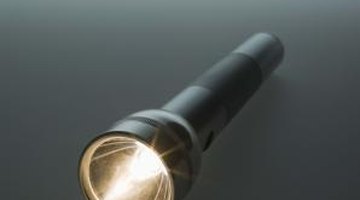Why Are House Lights Wired in Parallel?
Parallel wiring is a type of circuit used to supply electricity to multiple appliances, using one energy source. The advantage to wiring the appliances in parallel, rather than in a series circuit, is that electricity will continue to flow through the circuit even if one appliance fails. An example of the disadvantage to using a series circuit is a string of Christmas tree lights, where one light burns out and the entire string of lights fail.
Basic Circuit

A basic circuit can be thought of as a wire that connects the electrical source to one or more appliances. Components of a circuit include an electrical source, conducting wire, an appliance or outlet and a switch. In the home, appliances may be light bulbs, a toaster, television, hair dryer, and so-on. Electrical wiring is may be configured in one of two basic ways, in series or parallel. Each has advantages and disadvantages, depending on the application.
Series Circuit

Series circuits are found in most simple battery-operated appliances, such as flashlights. A wire is formed into a continuous loop that connects the negative terminal to the positive terminal of the battery. Between the terminals, the light bulb and switch are connected to the wire and become parts of the circuit loop. If the switch is opened (turned off) or the light bulb is removed or burns out, electricity ceases to flow. If the lights in your house were wired in series, they would all have to be turned on and off at the same time with one main switch.
Parallel Circuit
Parallel circuits allow you to energize one appliance at a time. Using a collateral wiring configuration, multiple appliances are connected to the main power source. This is accomplished by branching the main circuit and attaching appliances to the branches. In a parallel circuit, if one appliance is turned off or fails, electricity can still flow through the main circuit, energizing the other appliances.
Parallel Circuit Safety
Every time you add an appliance to a parallel circuit, the amperage or rate of electrical flow through the circuit increases. As amperage is increased, heat is generated in the wires. Overheated wiring can cause combustion, leading to a house fire. Fuses and breakers act as switches that automatically open the circuit or turn off the electricity before high amperage causes overheating of the wire.
Resources
Writer Bio
Denise Nyland "Denisen" is a long term resident of Panama City, Fla. She studied radiologic sciences and education and has published articles in multiple professional journals and contributed to various educational texts.
Photo Credits
- Jupiterimages/Creatas/Getty Images
- Jupiterimages/Comstock/Getty Images
More Articles



